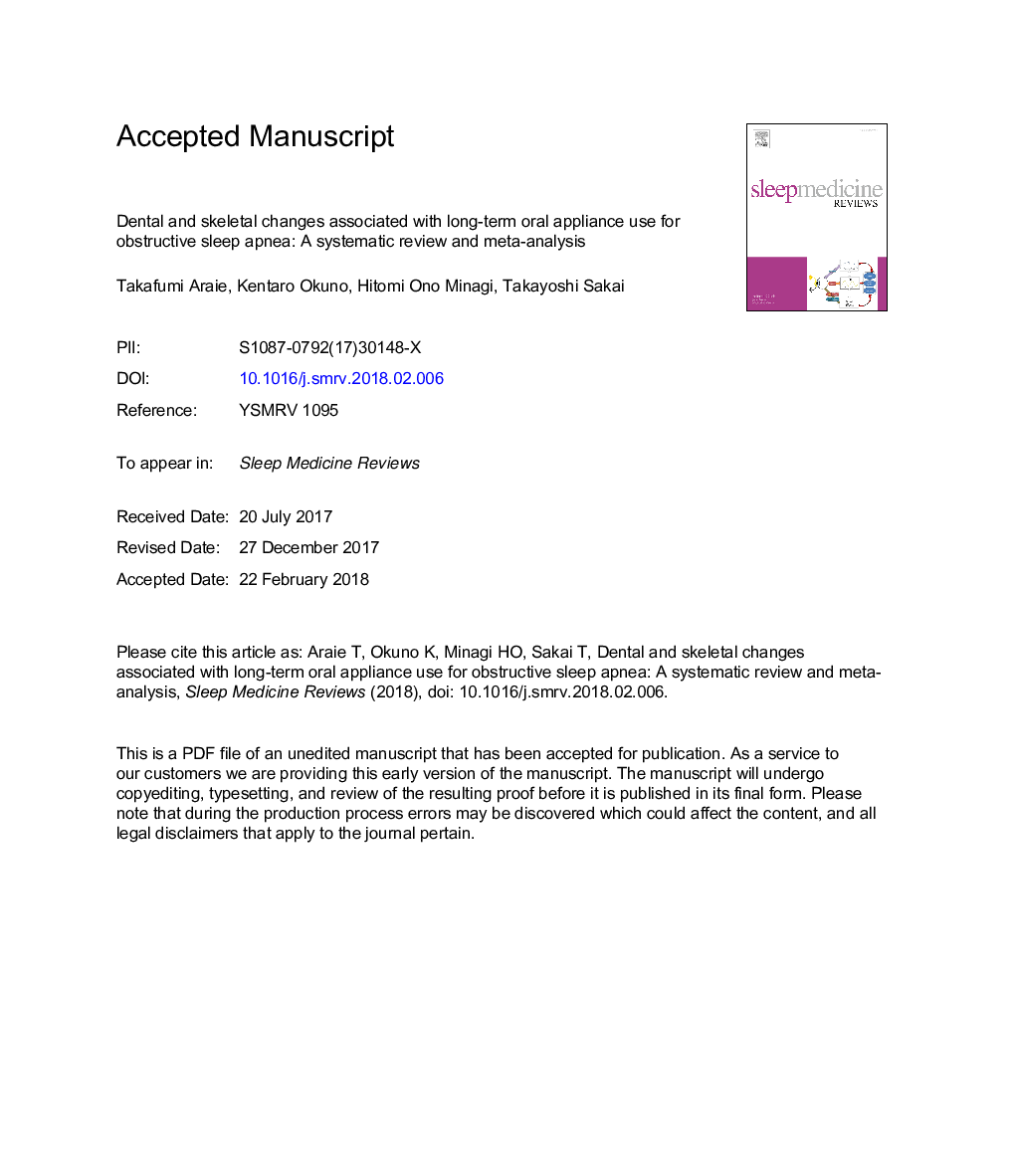| Article ID | Journal | Published Year | Pages | File Type |
|---|---|---|---|---|
| 8963416 | Sleep Medicine Reviews | 2018 | 37 Pages |
Abstract
An oral appliance (OA) is an effective treatment option for patients with obstructive sleep apnea (OSA), but dental and skeletal changes have been detected by many studies after long-term OA use. Better understanding of the long-term side effects may decrease discontinuation of OA use and assist clinicians to make informed decisions. Accordingly, a systematic review and meta-analysis were performed to evaluate the dental and skeletal changes associated with OAs designed to advance the mandible. The quality of the studies was determined by using the risk of bias assessment tool for non-randomized studies (RoBANS), and 12 studies were included in the meta-analysis. OA use was associated with a significant decrease of overjet (OJ) and overbite (OB), and it was suggested that both parameters decreased along with the duration of treatment. Meta-analysis also demonstrated a significant increase of L1-MP. However, there were no significant changes of skeletal modifications or mandibular rotation. Changes of incisor inclination were suggested to make a contribution to reduction of OJ and OB. In conclusion, long-term OA use was associated with dental changes. The results of this study provide information for clinicians about the long-term effects of OAs.
Related Topics
Life Sciences
Neuroscience
Neurology
Authors
Takafumi Araie, Kentaro Okuno, Hitomi Ono Minagi, Takayoshi Sakai,
